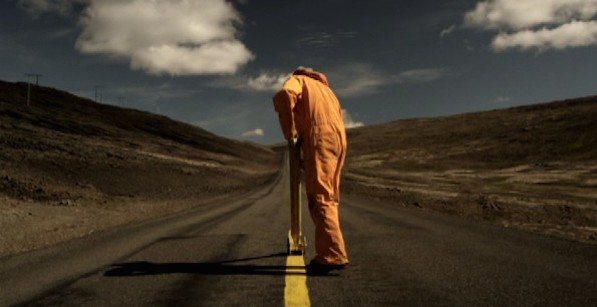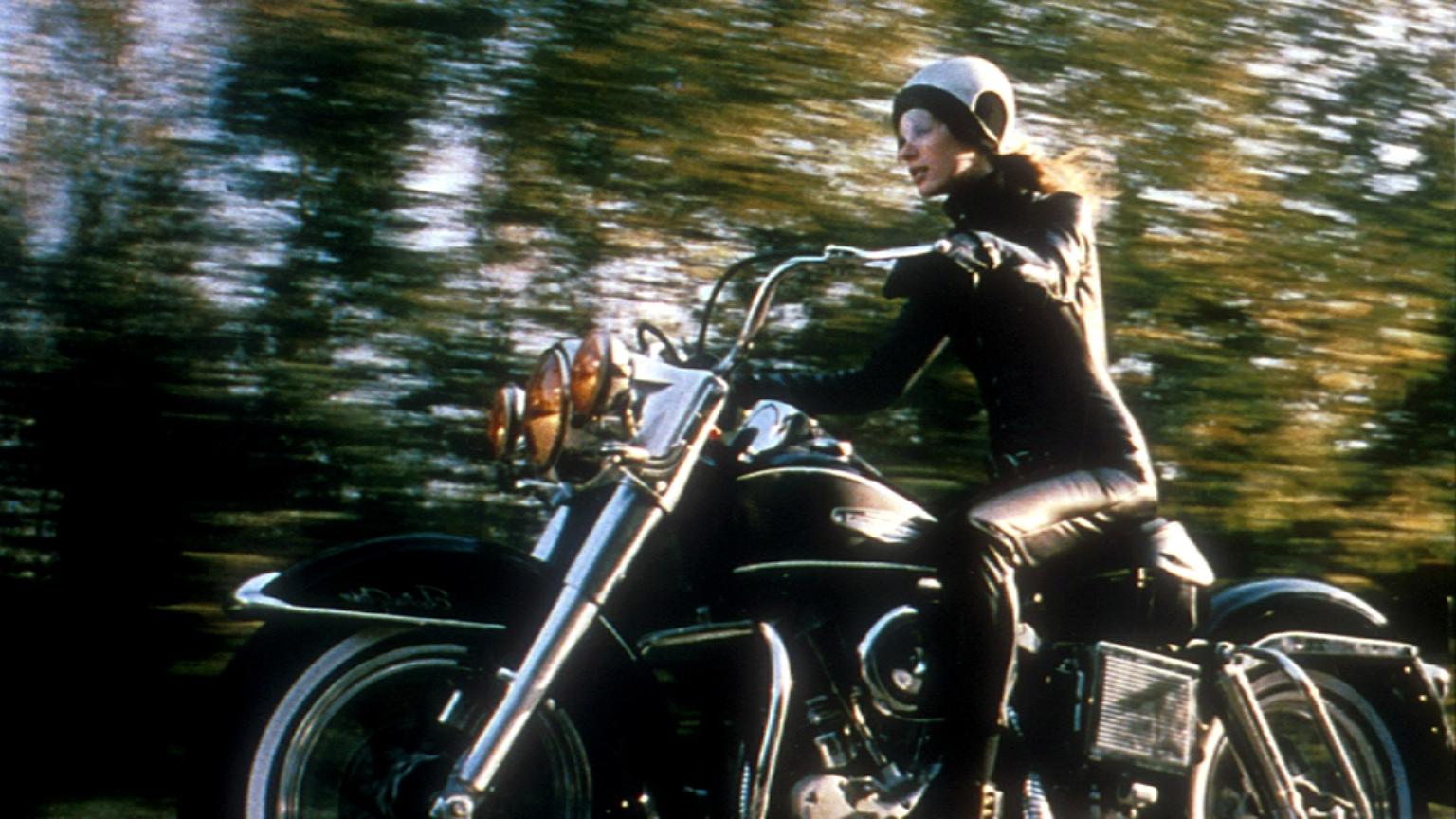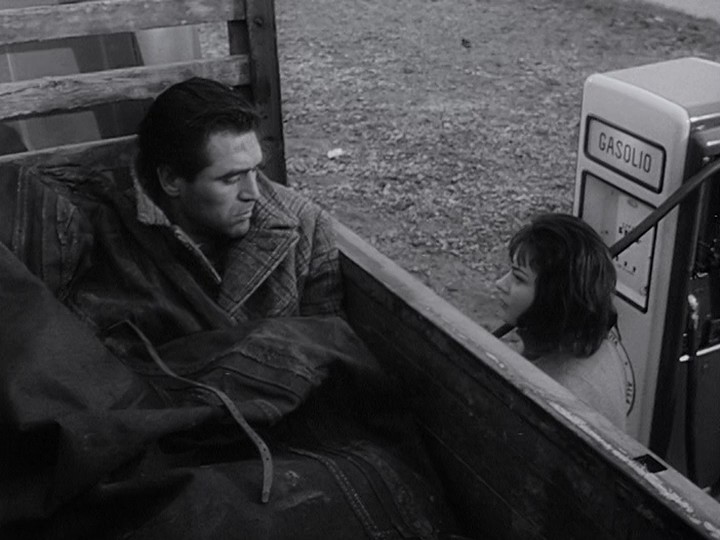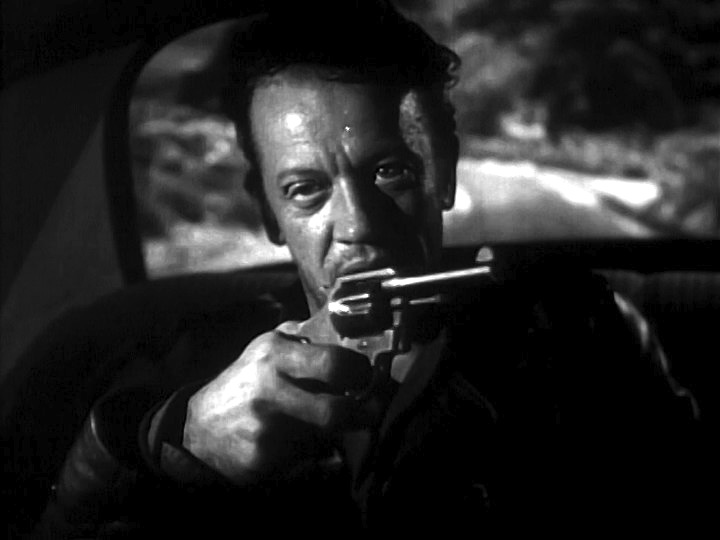[For more of our “Fifty Days, Fifty Lists,” see “Why Lists?” here on Keyframe.]
The road is escape, freedom, the limitless possibilities of the future. The road is a rootless existence, the absence of home, a life wandering but not belonging. The road is a journey, a search for meaning, a metaphor for life. The road is a detour, the rejection of responsibility, the evasion of life. That the road movie can mean so many things to so many people is testament to the scope of the genre but some aspects are universal. The road is journey, movement, an invitation to new relationships and an escape from old entanglements. Take a ride with these filmmakers to see what the road means to them. Because it’s not about the destination. It’s about the journey. Just like a movie.
Highway 61
A small town barber itching for adventure. An alluring rock band roadie on the lam with a stolen stash of drugs. A corpse, a casket and a car to whisk them out of a sleepy Ontario town for a trip through the country highways of the American south. The classic road movie recipe gets served up with Canadian flavor in this amiably shaggy tale from director Bruce McDonald and writer/star Don McKellar. The title comes from a Bob Dylan song and Highway 61 plays like a skewed version of one of Dylan’s sixties ballads, a folk odyssey filled with oddball characters and set to a funky playlist of rock-and-roll road music. (For a quick sample, try minutes 25:40 to 26:20.)
Island Etude
Get out of the car and onto a bicycle for this freewheeling trip around the island of Taiwan. Our rider is something an enigma but his welcoming smile and friendly approachability invites brief encounters along every stop of the way of this breezy travelogue of contemporary Taiwan along the coast highway. The graceful imagery and buoyant tone sustains the meandering journey while capturing the windblown joy of communing with the land and the people from the seat of a bike. Practically unknown in the U.S., it was a smash in Taiwan and the country’s official entry to the 2006 Academy Awards. (For a quick sample, try minutes 12:55 to 14:00.)
Girl on a Motorcycle
Girl on a Motorcycle could be the mod Euro answer to Easy Rider with a twist of sexual liberation. A striking young Marianne Faithfull climbs in the saddle of a Harley Davidson Electra Glide to flee a dull French marriage for a seductive lover (Alain Delon) in Germany. It’s less Summer of Love than Season of Lust, with Faithfull’s journey playing out in a succession of flashbacks, fantasies and kitschy psychedelic imagery in acid-drenched color, a sexual vision quest across the border of conformity. Extra points for the safety reminders; whenever Faithful gives in to recklessness on the road, her lover’s voice rings out a scolding. (For a quick sample, try minutes 15:10- 16:40.)
Old Joy
Kelly Reichardt’s intimate day trip follows old friends reconnecting on a jaunt through the Oregon Cascades to a hidden hot spring. Nothing really happens on the trip, partly because the navigator (Will Oldham) tokes up as they pull out of town and quickly loses his way, but you can feel the distance of years and life choices between free-spirit Oldham and family man Daniel London. Old Joy captures the both the ephemeral pleasure of the company of friends and the realization that everything has changed between them and the dynamics shift from moment to moment under the calm but brittle surface. Reichardt captures those moments with lucid simplicity. (For a quick sample, try minutes 11:40 to 13:00.)
Il grido
The road doesn’t seem so free in the bleak, desolate landscape of Italy’s Po Valley in Michelangelo Antonioni‘s meandering road movie. American tough guy Steve Cochran is the beefy Italian working class mechanic who hits the road with his young daughter after he’s dumped by his lover (Alida Valli). Caught between the neo-realism of the 1940s and early 1950s and the cool grace of Antonioni’s bourgeois dramas of the 1960s, this 1957 picture presents an odyssey of rootless affairs and dead end jobs and the traveler as the walking dead drifting unsettled and unsatisfied through a world where the seasons change and time passes yet nothing changes. (For a quick sample, try minutes 47:00 to 48:25.)
The Hitch-hiker
Ida Lupino drops the film noir into the desolation of the desert in this stripped down thriller about a pair of middle-class family men (Edmond O’Brien and Frank Lovejoy) who take a detour from a fishing trip and end up hostages of a psychotic killer (William Talman in gruesome gargoyle mode). Lupino casts the beautiful, barren landscape of Lone Pine as the desert highway down to the Gulf Coast, making the ordeal even more alien and isolated and the warning that it’s “based on a true story” only makes it more unsettling. You may never want to pick up another hitch-hiker again. (For a quick sample, try minutes 5:45 to 7:09.)
My Joy
If you thought The Hitch-hiker put the pall on the road movie, My Joy is one of the insidiously, surreally bleak portraits of life on the road ever put on film. Viktor Nemets brings a boyish innocence to the young trucker on a detour across a so-called cursed road in Central Russia. (rundmc.com) Lynchian horror film meets post-Soviet hard times in this mesmerizing (and beautifully shot) vision of a coldly vicious world of thieves, bullies, opportunists and murderers preying upon anyone who shows the slightest vulnerability. A wicked black humor runs under the matter-of-fact cruelty and corruption as his world breaks down on the road to nowhere. (For a quick sample, try minutes 35:40 to 37:10.)
Either Way
Call this ambling odd-couple film about two guys spending the summer painting lines and pounding posts along a rural highway in Iceland a road crew movie in the middle of nowhere. David Gordon Green remade it as Prince Avalanche, moving it to Texas but maintaining the story and the distinctive dynamic between the veteran who loves the camping existence and the quiet of the isolated emptiness and the young guy who yearns for the excitement (and the girls) of the city. The original is even more wry and low-key and it brings us gently to the end of the journey in good company. (For a quick sample, try minutes 3:15 to 4:48.)







